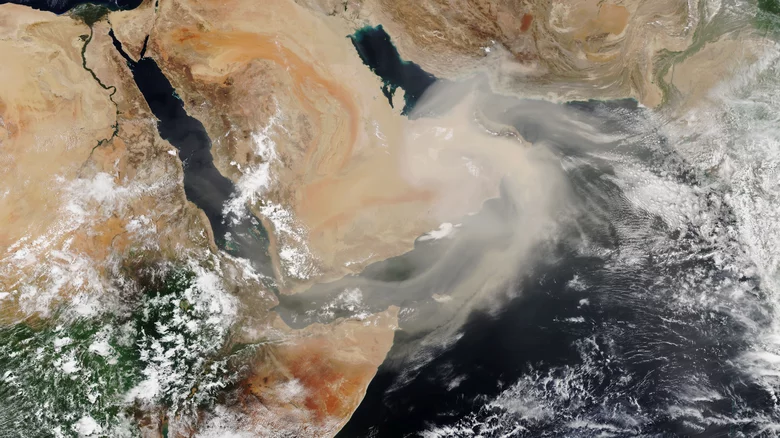Space agencies like NASA have been battling a tiny enemy: dust. From the Martian dust covering the solar panels of Mars landers such as insight and rovers such as opportunity, to the thorny sharp lunar dust that enters the components and erodes them, these small particles bring many problems However, NASA is interested not only in the dust deep in space, but also in the dust on earth
As part of its earth monitoring tools and experimental suite, NASA will soon launch an experiment to the international space station (ISS) to measure dust in the earth's atmosphere.
The earth surface mineral dust source investigation (EMIT) instrument analyzes dust using a spectrometer, which breaks down light into a spectrum to see the composition of the target (through JPL). This allows it to identify specific minerals in the dust and thus see what the dust is made of.
Our idea is to aim the instrument at the earth, especially in desert areas, because these areas are the source of a large amount of mineral dust in the atmosphere. According to NASA, the total amount of mineral dust brought out of desert areas and into the atmosphere is an incredible figure: more than 1billion metric tons per year. The researchers hope to measure how the dust moves through the atmosphere and how it affects the climate.
As the problem of climate change becomes more and more urgent, scientists want to know whether the dust has exacerbated the problem. Researchers know that climate change is causing more frequent sandstorms (through the atmospheric environment), and it also contributes to other dangerous weather events, such as sandstorms. However, trying to understand the overall impact of dust on the climate is complex.
As a study published in frontier geoscience explains, dust has complex effects on extreme temperatures, and researchers are not entirely sure how more dust around will affect the climate. It may be that different types of dust have different effects. Some can reflect the heat of the sun to help cool the earth, while others can absorb heat and contribute to atmospheric warming. UCLA says this means it is difficult for researchers to predict the role of dust in climate change.
This is why emit is used to measure the type of dust to see if it is a dark type that absorbs heat or a light type that reflects heat. Collecting these data will help scientists see how dust affects the climate now and predict how it will affect the climate in future changes. "
NASA explained: "by incorporating the global dust source composition data of emits into the models and predictions, scientists will better understand the possible changes in the amount and composition of dust in arid areas under different climate and land use conditions. The emits are scheduled to launch for the international space station on June 9, 2022."
